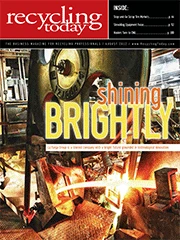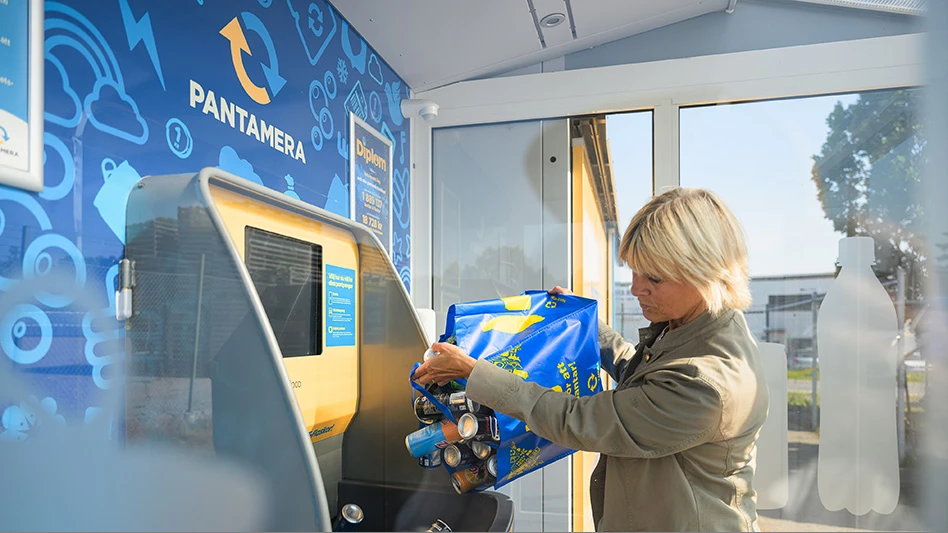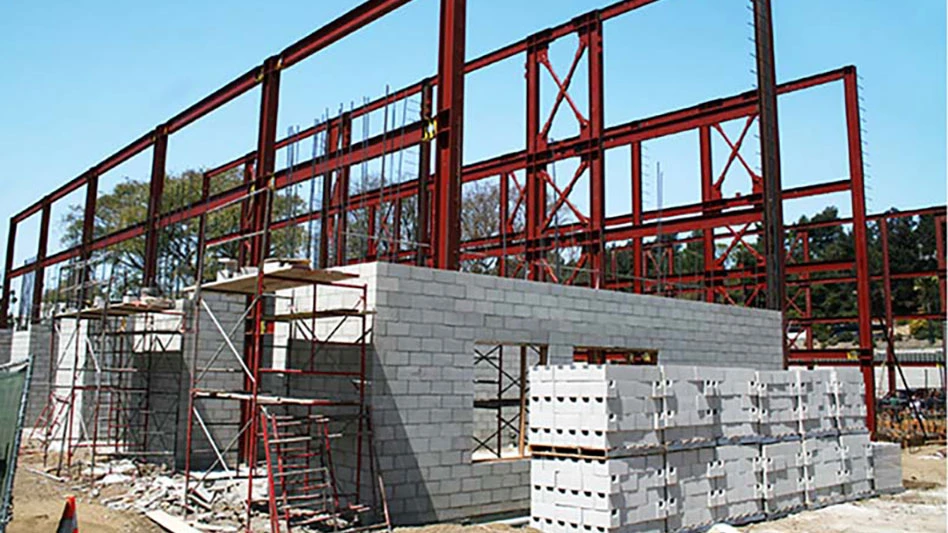 For a recycling and waste company to succeed in the New York metropolitan area, staying on the move is vital. Take the case of Action Carting Environmental Services, based in Newark, N.J. The company was founded in 1999, when it operated two trucks. Now, after a series of acquisitions both large and small, along with private equity investments and organic growth, the company has evolved into a waste hauling and recycling firm with 300 employees, 100 trucks and some $60 million in revenue.
For a recycling and waste company to succeed in the New York metropolitan area, staying on the move is vital. Take the case of Action Carting Environmental Services, based in Newark, N.J. The company was founded in 1999, when it operated two trucks. Now, after a series of acquisitions both large and small, along with private equity investments and organic growth, the company has evolved into a waste hauling and recycling firm with 300 employees, 100 trucks and some $60 million in revenue.
The fact that this relatively young company, with its humble beginnings, has been able to grow by relative leaps and bounds in the New York City metropolitan area speaks volumes about Action’s commitment to customers and the environment.
Besides handling the collection and processing of waste and recyclables from commercial operations throughout the five boroughs of New York City and into New Jersey, Action also collects organic waste from hundreds of customers and transports that material for composting. And it has helped to encourage and educate its customers to recycle more types of packaging while also providing the processing systems to make that happen.
A New Facility
Never a company to rest on past successes, Action is moving forward on the next phase of its growth plan: building a $13 million single-stream material recovery facility (MRF) in the Bronx, where mixed commercial waste and recyclables will be processed and sorted. The company now serves commercial facilities in the five boroughs of New York City, some parts of Westchester and New Jersey.
Having a system that can sort and recycle commercial dry waste is a rarity, says Action’s Director of Sales Joe Burke. But the strategic decision made sense for the company in terms of handling the New York City waste and recycling streams more efficiently.
“What we’re trying to do is make it as economic as possible for people to be able to do the right thing environmentally,” says Burke. He explains that a key goal is to extract more recyclables in this very competitive market.
“Recycling is one of the few things where, even though it costs money to recycle,” he says, “it still costs less than throwing it out as garbage.”
Operating a MRF is not new for Action: The company built its existing recycling center three years ago on Casanova Street in the Bronx, about three miles away from its newest facility. The existing MRF, which processes about 10,000 tons per month, handles all types of recyclables, requiring a moderate amount of manual sorting for some items.
The new facility, located on E. 132nd Street in the Bronx on 8.5 acres the company already owned and next to an existing Action transfer station, will feature a state-of-the-art RedWave optical sorting system, manufactured by BT-Wolfgang Binder of Austria and distributed in the United States by Karl W. Schmidt & Associates, Commerce City, Colo. The new MRF is expected to help Action improve its recovery rates by 20 percent.
 Burke says much of the single-stream material, particularly the dry mixed material, now being picked up by the company will be diverted to the new facility. The existing MRF will then concentrate on sorting and processing cardboard.
Burke says much of the single-stream material, particularly the dry mixed material, now being picked up by the company will be diverted to the new facility. The existing MRF will then concentrate on sorting and processing cardboard.
The new facility also may help Action consolidate routes, allowing in some cases one single-stream truck to pick up all materials at a customer’s location, rather than using two or three separate trucks as in the past to pick up mixed dry waste from various commercial facilities. “The new facility will allow us to do that more efficiently,” Burke explains. He says the new systems will be set up to deal with potentially contaminated dry waste.
“At our facility now, a lot of the sorting that we’re doing is manual,” says Burke, describing how Action employees typically rip open clear bags of recyclables, which are then run through a star screen and then to a belt where sorters further separate the materials by hand into bays. “There’s a lot of residual,” Burke notes, explaining that because of the amount of recyclables that still remains after the initial hand sort, the remaining material stream typically has to be run through the process a second time.
“The new facility obviously is built to handle these different types of dry waste,” Burke says.
The new facility is capable of processing 40 tons per hour, he says.
“The principals of Action Carting went all over the world looking for the best system to utilize for the New York City waste streams,” Burke says. “The machine that we’re putting together is as big as our building now that we use for all of our MRF operations.” Construction started a few months ago, and the facility is expected to be operational by January of 2013.
“We’re going to be able to take all of the plastics 1-7,” Burke says, as well as various grades of paper and aluminum.
Action’s customers include office buildings, retail stores, hospitals and museums. Key accounts include area Family Dollar stores, New York Presbyterian Hospital, Yankee Stadium and Citi Field.
“We’re going to divert all of our dry waste to that facility and we’re going to keep our Casanova recycling center mainly for cardboard,” Burke says of the new faciltiy. He adds that clean or relatively clean cardboard will continue to be processed at the company’s existing MRF.
The new facility is located in an existing building Action acquired in 2010 as part of its purchase of some of Republic Services’ New York assets. “We felt building this facility where our transfer station is would make the most sense for us,” explains Burke. Retrofitting the building involved moving some structural walls and digging down 18 inches to make room for the new equipment.
Having the sorting capability at the new facility will put an end to much of the added costs that are involved in dealing with contaminated loads at the existing MRF. Currently, contaminated loads received at the Casanova facility are taken to the company’s transfer facility on 132nd Street, where Action can accept up to 3,000 tons per month of municipal solid waste.
In addition to the RedWave optical sorting system, the new facility will have a bag ripper, a vacuum system to gather the clear plastic bags and several different conveyor belts running materials. “It was built like a race bike,” says Burke. “It wasn’t just one set up. We said, ‘This is what we’re looking for,’ and we got a couple of different proposals.”
Cutting-edge Services
The company already has a number of initiatives and other services in place designed to increase recycling rates, and the new MRF is a critical link in that chain.
Action provides an organic waste collection service for restaurants, food stores, hospital, hotels and other accounts where food waste is generated. Burke says Action is handling some 1,400 tons of organic waste each month. Besides two truck routes that pick up waste nightly, Action also has installed compactors at such places as Yankee Stadium and Whole Foods stores.
The material is transported to The Peninsula Compost Group in Wilmington, Del., or to New Milford Farms in New Milford, Conn., for composting.
Burke says that while the organics service isn’t particularly profitable, it is popular with customers. “The reason we offer it is because we want to do the right thing environmentally, and the customers are asking for it,” he says. Action started offering the service in 2003, and Burke says he believes Action is the first recycler in the area to offer it. “Now we’ve grown it to probably about 400 or 500 customers.”
 Another initiative Action has launched that will be served by the new MRF was initially prompted by its involvement with the Coalition for Resource Recovery (CoRR). The coalition is a multi-member group formed by consulting firm Global Green that aims to generate awareness and facilitate the recycling of paper cups and food packaging materials from fast-food restaurants.
Another initiative Action has launched that will be served by the new MRF was initially prompted by its involvement with the Coalition for Resource Recovery (CoRR). The coalition is a multi-member group formed by consulting firm Global Green that aims to generate awareness and facilitate the recycling of paper cups and food packaging materials from fast-food restaurants.
Action joined the group in 2009 and conducted pilot programs with numerous New York City Starbucks and Pret a Manger locations it serviced. The idea, Burke says, was to generate awareness about the recyclability of paper cups and packaging.
“People don’t understand that it’s recyclable,” Burke says. “Customers don’t understand it, trash haulers don’t understand it, MRFs don’t understand it and mills don’t understand it.” But, he adds, if such awareness is created, “then more people will begin to accept this material.”
Burke says he’s motivated by the belief that the amount of recyclable paper, while higher today than ever in the past, will plateau in the years to come. “You’re going to be getting as much as you can out of the paper being produced, and people are going to look for different waste streams that have not been recycled, like the cup.”
Although the packaging materials collected through this effort are found to have various levels of contamination, they’re still recyclable, Burke says.
Currently Action is working with 18 Pret a Manger locations and some 100 Starbucks locations to recover this fiber source. The company has determined that the cups and packaging materials can be collected in mixed recyclables containers and with commercial dry waste. “Basically we take all of their packaging and we’re bringing it back to our facility and we’re putting it in with our mixed paper stream,” says Burke. And he notes, the company’s new facility will be particularly well-equipped to sort these materials.
The author is managing editor of Recycling Today Global Edition and can be contacted at lmckenna@gie.net.

Explore the August 2012 Issue
Check out more from this issue and find your next story to read.
Latest from Recycling Today
- CP Group announces new senior vice president
- APR publishes Design Guide in French
- AmSty recorded first sales of PolyRenew Styrene in 2024
- PRE says EU’s plastic recycling industry at a breaking point
- Call2Recycle Canada, Staples Professional expand partnership
- Circular Services breaks ground on north Texas MRF
- Tariff uncertainty results in choppy nonferrous scrap flows
- CATL, Ellen MacArthur Foundation establish battery partnership






